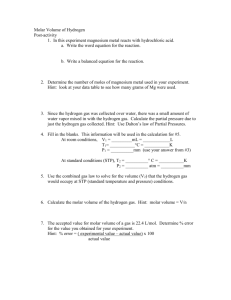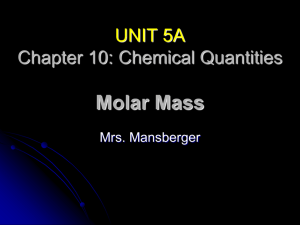Gas DILL entries 2015
advertisement
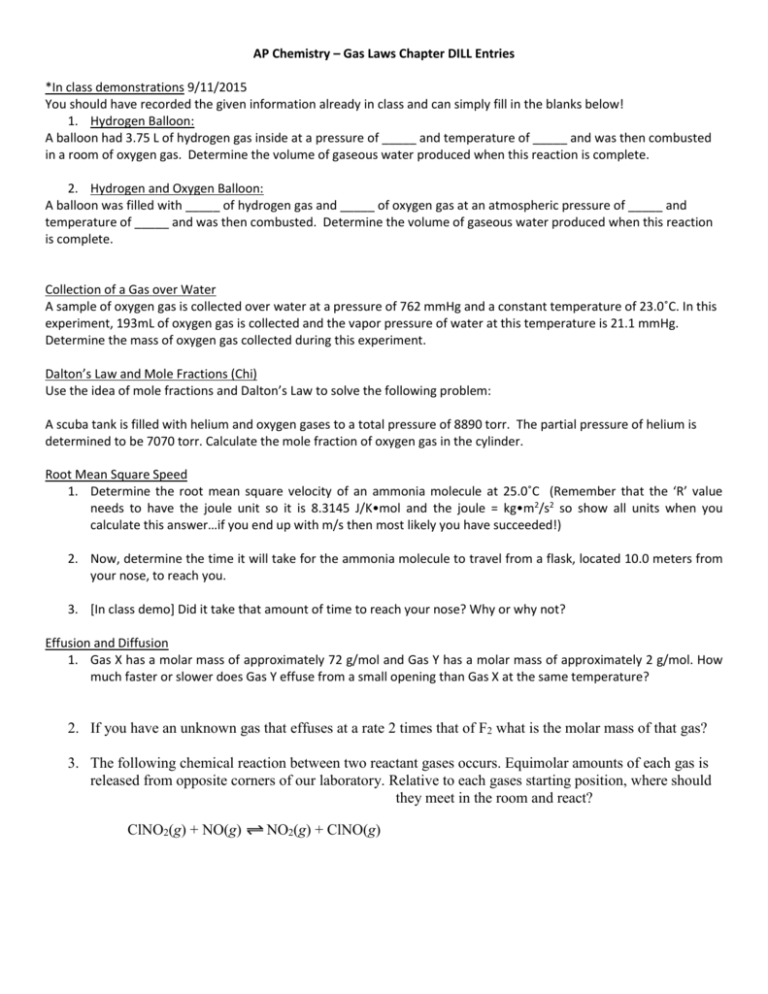
AP Chemistry – Gas Laws Chapter DILL Entries *In class demonstrations 9/11/2015 You should have recorded the given information already in class and can simply fill in the blanks below! 1. Hydrogen Balloon: A balloon had 3.75 L of hydrogen gas inside at a pressure of _____ and temperature of _____ and was then combusted in a room of oxygen gas. Determine the volume of gaseous water produced when this reaction is complete. 2. Hydrogen and Oxygen Balloon: A balloon was filled with _____ of hydrogen gas and _____ of oxygen gas at an atmospheric pressure of _____ and temperature of _____ and was then combusted. Determine the volume of gaseous water produced when this reaction is complete. Collection of a Gas over Water A sample of oxygen gas is collected over water at a pressure of 762 mmHg and a constant temperature of 23.0˚C. In this experiment, 193mL of oxygen gas is collected and the vapor pressure of water at this temperature is 21.1 mmHg. Determine the mass of oxygen gas collected during this experiment. Dalton’s Law and Mole Fractions (Chi) Use the idea of mole fractions and Dalton’s Law to solve the following problem: A scuba tank is filled with helium and oxygen gases to a total pressure of 8890 torr. The partial pressure of helium is determined to be 7070 torr. Calculate the mole fraction of oxygen gas in the cylinder. Root Mean Square Speed 1. Determine the root mean square velocity of an ammonia molecule at 25.0˚C (Remember that the ‘R’ value needs to have the joule unit so it is 8.3145 J/K•mol and the joule = kg•m2/s2 so show all units when you calculate this answer…if you end up with m/s then most likely you have succeeded!) 2. Now, determine the time it will take for the ammonia molecule to travel from a flask, located 10.0 meters from your nose, to reach you. 3. [In class demo] Did it take that amount of time to reach your nose? Why or why not? Effusion and Diffusion 1. Gas X has a molar mass of approximately 72 g/mol and Gas Y has a molar mass of approximately 2 g/mol. How much faster or slower does Gas Y effuse from a small opening than Gas X at the same temperature? 2. If you have an unknown gas that effuses at a rate 2 times that of F2 what is the molar mass of that gas? 3. The following chemical reaction between two reactant gases occurs. Equimolar amounts of each gas is released from opposite corners of our laboratory. Relative to each gases starting position, where should they meet in the room and react? ClNO2(g) + NO(g) NO2(g) + ClNO(g)
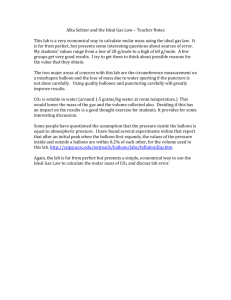

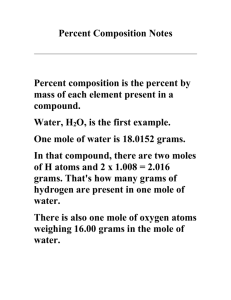
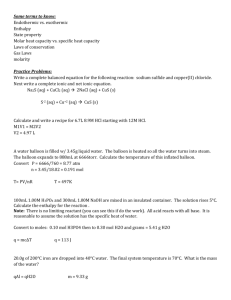
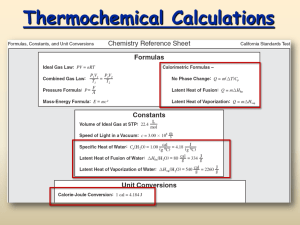
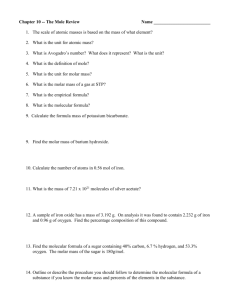

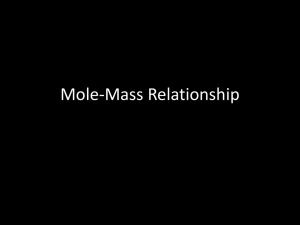

![Cindy Cai Ch. 10 & 24 gas & complex ion Rx test [50 points] AP](http://s3.studylib.net/store/data/009017289_1-2d8fa1d50414889bc159ab8c8d265314-300x300.png)
